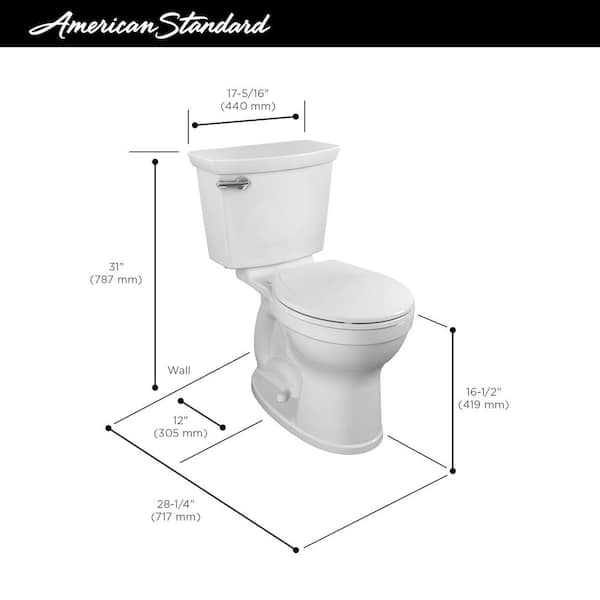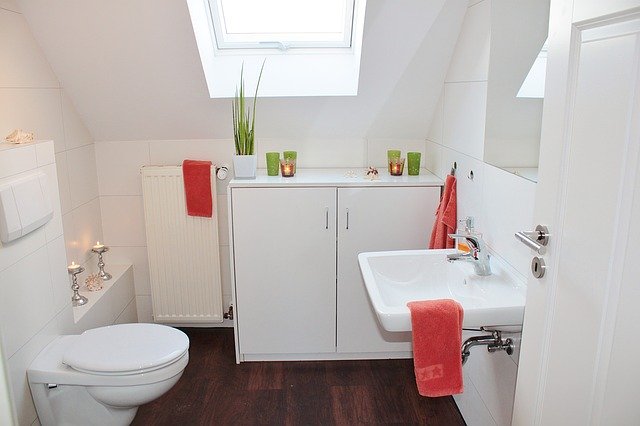Have you ever wondered about the weight of an item as essential as a toilet? It might seem like an odd question at first, but understanding the weight of a toilet can be surprisingly important for various reasons.
Whether you’re planning a bathroom renovation, moving into a new home, or simply curious about the logistics of installation, knowing how much a toilet weighs can save you time, effort, and even money. You’ll uncover the factors that influence a toilet’s weight and why it matters to you.
Get ready to discover insights that could transform the way you think about this everyday fixture. Stay with us, and let’s dive into the details that make all the difference!

Credit: www.homedepot.com
Table of Contents
Factors Affecting Toilet Weight
Toilets are made from different materials. Some use ceramic; others use porcelain. Porcelain toilets are usually heavier. Ceramic is lighter but still strong. Plastic toilets are the lightest. Each material affects the toilet’s weight. Heavier toilets can be more durable. Lighter ones are easier to move. Material choice impacts weight greatly.
Toilet design matters too. Some designs are simple. Others have extra features. A toilet with more features is often heavier. Basic designs weigh less. One-piece toilets are heavier than two-piece ones. A toilet’s style can add extra weight. Design impacts both function and weight.
How a toilet is made affects its weight. Some are made with stronger materials. Others use lighter parts. The process can add weight. Quality control can make toilets heavier. Cheaper toilets might weigh less. Manufacturing choices impact a toilet’s final weight.
Average Weight Of Different Toilet Types
One-piece toilets are heavy. They weigh between 70 to 120 pounds. This type combines the tank and bowl. It has a sleek design. The weight can be a bit more for larger models.
Two-piece toilets are common. They weigh 60 to 100 pounds. This type has a separate tank and bowl. It’s easier to carry in parts. Many homes have this type.
Wall-mounted toilets are unique. They weigh about 50 to 80 pounds. These toilets attach to the wall. They save floor space. They might need extra support.
Portable toilets are light. They weigh around 10 to 15 pounds. These toilets are easy to move. They are often used outdoors. They fit in small spaces.
Lightweight Vs. Heavyweight Toilets
Lightweight toilets are easy to move. You can install them quickly. They are perfect for small bathrooms. These toilets are also less expensive. But they might not last long. Some people say they feel flimsy. Lightweight models may break easily. Choose wisely if you want something strong.
Heavier toilets feel sturdy. They last a long time. Many people like their solid look. These toilets are also harder to move. You may need help to install them. They cost more money. Heavy models are great for big bathrooms. Make sure your floor can hold them. Choose a heavy toilet for strength and durability.
Impact Of Weight On Installation
Toilet weight affects installation ease and safety. Lighter toilets simplify handling and reduce installation time. Heavier models might need extra support, impacting bathroom floor stability. Understanding weight helps in planning and choosing the right tools for installation.
Ease Of Installation
The weight of a toilet affects how easy it is to install. Heavier toilets are hard to move. This can make installation take longer. Light toilets are easier to lift. You can put them in place quickly. This saves time and effort.
Structural Support Considerations
A toilet’s weight impacts the floor structure. Heavy toilets need strong support. Floors must be checked before installation. If floors are weak, they might break. Light toilets are safer for weak floors. They cause less stress on the structure. Always ensure the floor can hold the toilet’s weight.
Weight And Transportation
Toilets are often heavier than they look. Most toilets weigh between 60 to 120 pounds. Weight matters when moving toilets. You may need help to lift them safely. Use a dolly or hand truck to avoid injury. Proper tools make the job easier. Secure the toilet during transport. Protect it from bumps. Wrap it in blankets or padding. This prevents chips and cracks.
Shipping toilets needs planning. Consider the weight for shipping costs. Heavier toilets cost more to ship. Choose sturdy boxes for packing. Use foam or bubble wrap inside. Avoid damage during transit. Check shipping options. Some companies offer special rates for heavy items. Make sure to insure your package. Insurance covers damage during shipping.

Credit: horow.com
Innovations In Toilet Design
Many toilets use eco-friendly materials now. These materials are safe for the earth. They help save water too. Some materials are recycled. Others come from nature. These materials make toilets light and strong. It helps to lower the toilet’s weight. This change is good for our planet.
Toilets are now smaller and lighter. This makes them easy to move. Many homes have small spaces. These designs fit well there. A lighter toilet is easy to install. People can carry it without much help. These changes make it better for everyone.
Consumer Considerations
Choosing a toilet means thinking about its size and weight. A small bathroom might need a lighter toilet. This helps when moving or installing it. Heavier toilets often feel more stable. They may offer extra features. But be careful. Heavy toilets are harder to move.
Weight affects how well a toilet works. A lighter toilet may be easier to clean. Some people prefer a heavier toilet for comfort. Heavy toilets may have more features. Consider what you need. Think about who will use the toilet. Older people might need a stable seat. Kids might like a smaller, lighter toilet.

Credit: www.chinalory.com
Frequently Asked Questions
How Much Does A Standard Toilet Weigh?
A standard toilet typically weighs between 60 to 120 pounds. The weight can vary based on the toilet’s design and material. Ceramic toilets are heavier, while plastic models are lighter. Consider weight when planning installation, as it affects ease of handling and support requirements.
Do Toilet Weights Differ By Material?
Yes, toilet weights vary by material. Ceramic toilets are heavier, often weighing around 100 pounds. Plastic toilets are lighter, usually around 60 pounds. Cast iron models are the heaviest, exceeding 120 pounds. Material choice impacts durability and installation complexity, influencing bathroom design decisions.
Are Wall-mounted Toilets Lighter Than Floor Models?
Wall-mounted toilets are generally lighter than floor models. These toilets weigh around 50 to 80 pounds. Their design supports weight distribution across the wall, reducing floor load. Wall-mounted toilets offer a sleek appearance, ideal for modern bathrooms, and simplify cleaning underneath.
Does Toilet Weight Affect Installation?
Yes, toilet weight impacts installation complexity. Heavier toilets require more support and careful handling during setup. Installers might need additional tools or assistance for heavier models. Understanding weight considerations helps plan efficient installations, ensuring the toilet is secure and functional in your bathroom.
Conclusion
Toilet weight varies based on materials and design. On average, toilets weigh between 50 to 120 pounds. Lightweight models are easier to install. Heavier ones might offer more durability. Consider your bathroom space and floor strength. Check product specifications before buying.
This helps ensure the toilet fits your needs. Understanding weight helps in planning installation. It also aids in choosing the right model for your home. Always consult professionals if unsure. Proper installation ensures optimal performance. Remember, a well-chosen toilet enhances comfort and bathroom efficiency.






